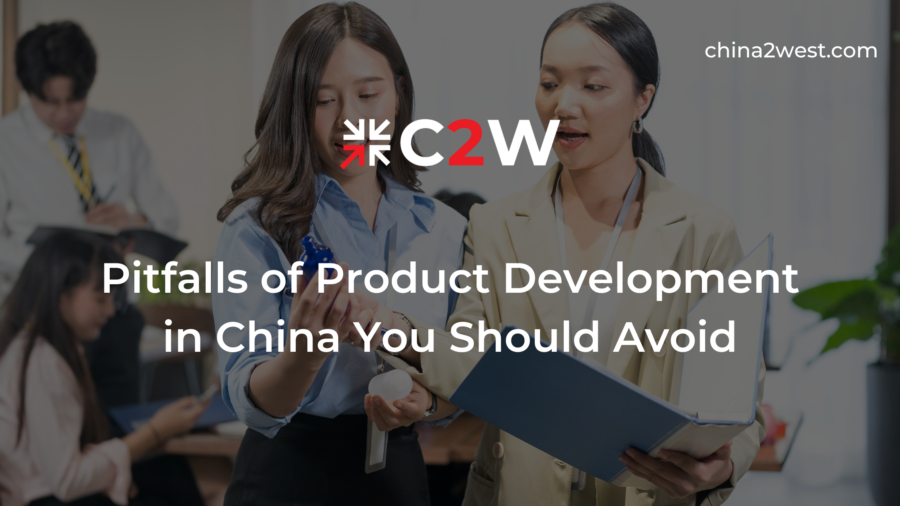China has emerged as a global manufacturing powerhouse, drawing businesses worldwide to develop and produce their products within its borders. This strategic move offers several advantages, including cost savings and access to a massive consumer market.
However, it’s essential to recognize that there are various potential pitfalls in product development when dealing with China.
In this comprehensive article, we will delve deeper into these pitfalls, providing valuable insights and expert tips on how to avoid them. By navigating these challenges wisely, you can ensure a smoother and more successful product development journey in the dynamic landscape of China.
Cultural and Language Barriers
One of the most significant hurdles that companies often encounter when engaging in product development in China is navigating the intricate web of cultural and language barriers. These barriers can lead to miscommunication, misunderstandings, and, consequently, costly mistakes and delays. To avoid this pitfall, consider the following strategies:
Hire Local Experts
One effective solution is to employ bilingual professionals or collaborate with local experts who can bridge the language gap. Having individuals on your team who are fluent in both Chinese and your native language can facilitate clear communication and ensure that nothing is lost in translation.
Invest in Cultural Training
Understanding Chinese business etiquette and customs is paramount for fostering better relationships with your Chinese partners. Consider providing cultural training for your team members who will be involved in product development in China.
This will not only prevent unintentional breaches of etiquette but also demonstrate your commitment to mutual respect.
Intellectual Property Concerns
Protecting your intellectual property (IP) is a paramount concern when embarking on product development in China. IP theft and infringement are legitimate worries. Here’s how you can safeguard your valuable ideas and creations:
File for Patents and Trademarks
One of the most robust protections for your intellectual property is to register your patents and trademarks in China promptly. This legal step can prevent unauthorized use of your innovative concepts and branding.
Implement Strict NDAs
When sharing sensitive information with Chinese partners, insist on non-disclosure agreements (NDAs) that legally bind them to confidentiality. This provides an added layer of security for your IP and trade secrets.
Quality Control and Counterfeits
Maintaining consistent product quality can be challenging in China due to varying standards and the presence of counterfeit products. To ensure that your products meet the desired quality standards, consider these steps:
Partner with Reputable Manufacturers
Choosing manufacturers with a proven track record of quality and reliability is crucial. Conduct thorough due diligence before entering into partnerships. Investigate their past performance and client reviews to ensure they align with your quality expectations.
Regular Inspections
Performing regular quality control inspections during production is essential. This proactive approach allows you to identify and address any quality issues promptly, reducing the risk of producing subpar or defective products.
Supply Chain Disruptions
China’s extensive supply chain network can be both a boon and a challenge. While it offers access to various resources, it can also be vulnerable to disruptions. Mitigate these risks by adopting the following strategies:
Diversify Suppliers
Relying on a single supplier can leave your product development process vulnerable to disruptions. Diversify your supplier base by sourcing components or materials from multiple suppliers. This reduces your exposure to potential risks related to a single-source dependency.
Maintain Buffer Stock
To safeguard against supply chain disruptions, consider maintaining a buffer stock of critical components or materials. This strategic inventory can cushion the impact of unexpected events and ensure that your production continues uninterrupted.
Regulatory Compliance
Navigating China’s intricate regulatory landscape can be overwhelming, but it’s essential for a successful product development venture. To avoid regulatory pitfalls, follow these recommendations:
Consult Local Experts
Seek legal counsel or consultancy services from experts who are well-versed in Chinese regulations. Their expertise can help you navigate the complex bureaucratic processes and ensure compliance with all necessary laws and standards.
Stay Updated
China’s regulatory landscape is dynamic, with rules and regulations often changing. Stay informed about these changes by regularly monitoring updates and adjusting your product development processes accordingly.
Cost Management
Cost overruns are common in product development, and they can be exacerbated when working in China. To manage costs effectively, consider these approaches:
Budget Thoroughly
Create a detailed budget that encompasses all potential expenses associated with product development in China. Be sure to account for unforeseen costs, which are not uncommon in international business ventures. A well-prepared budget is your first line of defense against cost overruns.
Negotiate Wisely
Negotiating contracts and pricing diligently is vital. Ensure that you secure the best possible terms and pricing agreements with your Chinese partners and suppliers. Effective negotiation can help you optimize your investment and minimize unnecessary expenses.
Geopolitical Factors
Global political events and trade tensions can significantly impact your product development plans in China. To remain resilient in the face of these challenges, adopt the following strategies:
Monitor International Relations
Stay vigilant and monitor global developments that may affect trade relations with China. Being aware of geopolitical shifts can help you adjust your strategies and anticipate potential disruptions.
Diversify Market Presence
Consider exploring opportunities in other international markets to reduce your reliance on the Chinese market. Diversification can be an effective risk mitigation strategy, ensuring that your business remains resilient in the face of geopolitical uncertainties.
Product development in China presents immense opportunities, but it also comes with its share of challenges. With careful planning, diligence, and the strategies outlined in this article, you can turn these challenges into opportunities for growth and success in China’s dynamic market. Work with a professional and experienced team of industrial designers and engineers like C2W’s. You’ll be all amazed! Contact us now.


